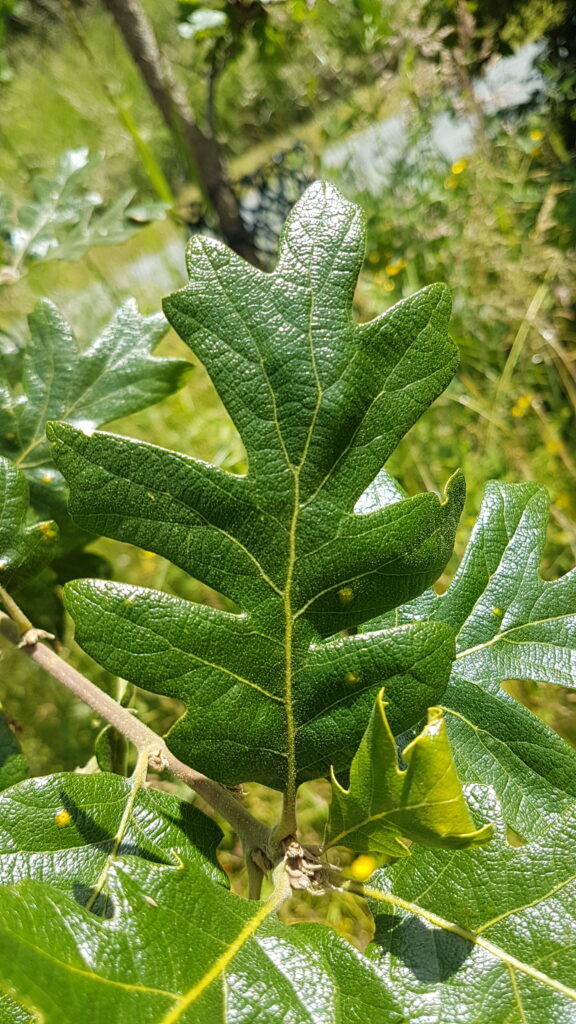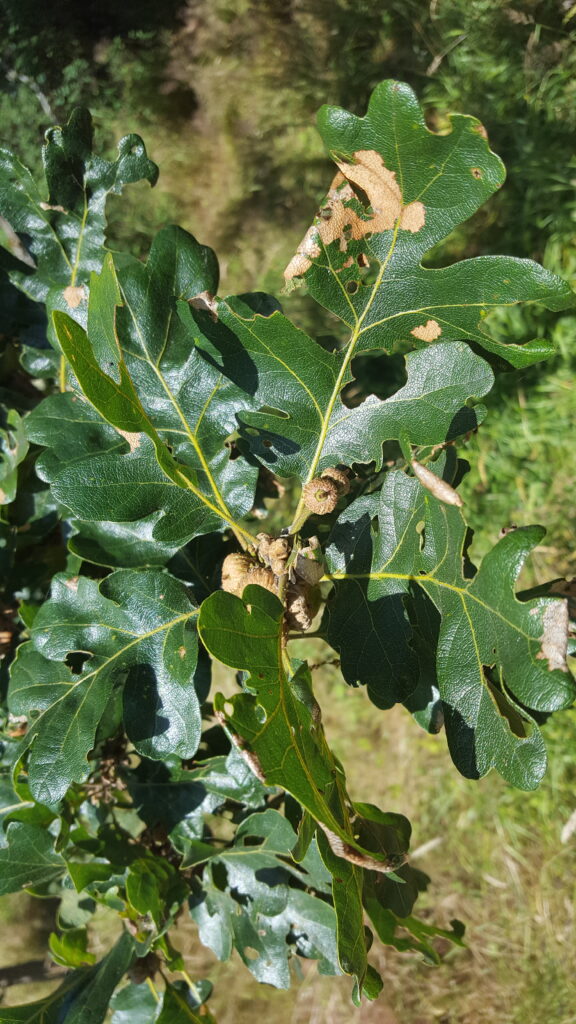Garry Oak (Quercus garryana)

Garry oak trees are the only native oak tree in Western Canada. They can be identified by their crooked branches, ridged gray bark, and lobed leaves. Garry Oak ecosystems can live in a variety of habitats, from woodland areas to meadows. The presence of Garry Oak trees defines a range of ecosystems called Garry Oak ecosystems, which provide habitat for many species at risk in BC.

Garry oak ecosystems used to be very common along the southeastern coast of Vancouver Island, but are now threatened by land use, fire suppression, and invasive species. Garry oak ecosystems are a focus of restoration efforts in BC, but it is difficult to preserve these areas because Garry oak ecosystems are transitional ecosystems. Ecological succession is the process by which the species making up a community change over time. As a transitional ecosystem, Garry oak ecosystems occur after a forest fire has burned an area, but will eventually transition into coniferous forests. In order for a Garry Oak ecosystem to remain, there must be regular disturbances (like fires), which move the ecosystem back to an earlier successional stage.

Garry Oak ecosystems were extremely important to local First Nations communities. Garry Oak meadows were used to harvest camas bulbs, and the acorns from the Garry Oak trees could also be eaten. First Nations communities also cared for these ecosystems using controlled burns, which created disturbance that helped to maintain the Garry Oak ecosystems over time. This allowed them to continue harvesting camas from these areas, and also increased the presence of Garry Oak ecosystems throughout BC.
For more information about Garry oaks, visit Native Plants PNW or E-Flora BC. For more information about Garry Oak ecosystems, visit the GOERT website.


